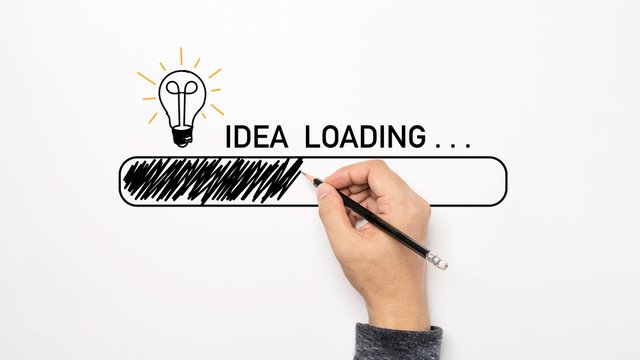How to Patent an Idea or Product?
If you're like most inventors, you might have an idea for a useful product and are trying to figure out how to protect your invention. Your first step is likely to search the Internet for information about how to patent an idea or product. While there are a number of companies online that claim they can help you with your application process, it's not always clear what services they're offering and what they'll do for you. This article will help answer some of those questions and provide some useful information about the patent process in general.
- How can you patent an idea or product?
One of the most important things you can do as an inventor is to figure out how to protect your invention. You’ll need to decide how to protect your idea or product in order to ensure that no one else can take it away from you. Patents are one way to protect inventions, but other ways include licensing, going to court, offering maintenance, and perhaps most importantly, following these practices (rules) of respecting others’ intellectual property.
Patents are like investments. It’s important, before you apply for a patent, to carefully think about whether it’s really worth investing the time and resources necessary to successfully patent your idea. If you can think this through, you’ll be able to make the best possible decision on whether or not to patent your idea.
Before you patent an idea, you will want to make sure it has:
The reason patents are important is that they provide a lot of protection. When you patent an idea that never becomes a product, you protect it for 29+ years. This gives you years of the tendency for legal action, should someone else patent your idea and be infringing.
Here are some simple rules that you should follow.
You shouldn't patent your idea if you want it to be usable by others. If you’re going to patent an idea, you should first make it clear you’ll only be using it for your own personal, non-commercial use.
If you have different plans to use your invention for commercial purposes, that’s fine. But if you’d only like to use it for your own personal use, always make sure your application includes enough information to establish that your invention is yours. Include:
Treat your application as if you are applying for a patent in the United States. If you don’t have a jurisdictional dispute, you can find case law on old U.K. cases at Lexis.com by searching Patent Act Cases.
- What is a provisional patent?
A provisional patent application is a piece of paper that protects your invention for a year while you do some research and figure out whether or not you actually want to patent it. If you decide to apply for a non-provisional patent, you’ll have to go back and redo the research you did for your provisional patent. The goal of any patent is to grant a company a perpetual license to use your idea for the rest of your life.
“Patents are supposed to prevent others from copying your work, not maintain your monopoly.”
— Zorava, the inventor of the reusable straw
A patent may seem like an obvious step to take while toiling away in your garage or trying to perfect an invention. It may even seem like an easy option to avoid the costly process of having to create a new product to market yourself and try to find an initial customer. It’s not. Once you’ve filed for a patent, there are several steps that must be completed before the patent can be issued. Or rather, they must be completed before you can file an application.
The patent application process is a long and complicated one. It can take from a few weeks to many months and costs are also not necessarily negotiable once you start talking to patent attorneys. Depending on what you consider when you begin the process, the timeframe can range anywhere from a few weeks to several years. According to a 2018 survey, only about 30% of inventors are generally successful in obtaining a patent.
Compared to most products, patents are relatively easy to protect. The United States has a Supreme Court-approved process for patent applications. However, not every country follows this exact procedure. The International Patent Application (IPA) is one way to protect your invention, but while the IPA is a legally binding contract between inventor and the patent office, many countries use a slightly different procedure when it comes to patent applications.
- What does it cost to patent an idea or product?
When you apply for a patent, you have to pay a fee based on the type of patent you're applying for. For a provisional patent application, the filing fee is $65 and the issue fee is $130, for a total of $195.For a complete list of what you must pay for a patent, see our article on How Much Do you Need to Apply for a Patent. The filing fee for patents is calculated based on the complexity of the invention and how many claims you have. For your convenience, we can break down the patent filing fee for each type of patent into the following three payments:
(Page 1 of 3)
Patents are granted by the UK Patent and Trademark Office (UKIPO). The UKPIO publishes print and electronic patents on its website, along with information about its Bulletin System, which makes it easy to search for prior issued patents. A patent helps protect an invention, makes it legal — and, in certain cases — rewards inventors with royalties or licenses based on the sales of their products after they register the patent.
Although many of the steps in the patent application process can seem intimidating, there are some basic, general principles you can follow that should make your process more predictable.
Any useful intellectual property invention will require some level of protection. This protection may take a variety of forms, including licenses. This is the most common type of legal protection for inventions, although patents are also primarily intended to reward inventors.
What we refer to as “intellectual property” in the patent context might include trademarks, copyright, hardware, and manufacturing processes. In other words, the idea or product you yourself invented may also be covered by some form of legal protection.
The first step in patent application is to make sure you have read through the Electronic Application for Patent, commonly referred to as an “E7.” The E7 must be filed electronically, although you can still file paper applications.
- Patent your invention yourself or hire someone else to do it for you?
You have the option of filing a provisional or non-provisional patent. The non-provisional is the patent you want to file. It gives you the most protection. The provisional patent is a cheaper option, but it is more difficult to convert it to a non-provisional patent. The way they convert a non-provisional patent is through what is called a compulsory licensing agreement.
When you apply for a patent, you must provide certain information about how your invention works. If this information isn't filed with your application, the UKIPO won't be able to tell you if your application would be successful.
According to the UKIPO:
Once the information is filed, an inventor normally gives it to other inventors who work on the application, and they submit it for examination. If it passes the examination, it becomes a patent and is immediately assigned to the inventor, who then needs to seek other parties who are also patentable before using the patent.
The inventions not assigned to you often get put into a pool to be used by other inventors, either as one invention or as a group of related or overlapping inventions. Then, those inventor-submission-only inventions enter into a compulsory license agreement with the UKIPO. This agreement makes other parties, including the public, legally bound to license the inventions being given up so that others can use them. If you don’t want to get a compulsory license upfront, you can ask other parties to part ways with a portion of their patent.
The resulting patent starts the ball rolling on the huge and expensive patent process.
The UKIPO publishes all patent applications online. The electronic filing system is archaic by today’s standards, and many of the functions were once done in person. However, if you can find the form for a patent, you can use it to file an application online. Here’s how to get started.
By law, only one inventor can file a patent application. That person can be yourself, a small business, or a university.
- The benefits of hiring a professional to help with your application process
Working with a professional recruiter can make the application process easier and help you avoid mistakes. A professional recruiter will save you time and make sure you focus on the right things during the application process.
From an engineering perspective, it helps to have separate documents in case you split your patent application into several sections. For example, if you script the application in some way, it would make sense to put everything in one file to simplify the task of creating the entire application in one step.
Will: What is a Patent Application Review? Before we get into the application screening and filing process itself, we'll look at what a patent application review is and why it's necessary.
The patent application review is a time-consuming process that helps you discover errors in the way that you've formatted your application or formulas used to perform calculations in your application. It also helps you know whether your application is complete and if there are any missing pages or other questions you need answered before the application can be granted. The patent application review is an in-person or pre-recorded meeting with our patent application team. The purpose of the patent application review is to provide you with all the information you need before we can file your application for patent protection.
All of the information in the patent application review includes the basic facts, the claims that you plan to make and the steps you're planning to take to implement those claims. We hope the information in the patent application review will help ensure that your proposed invention meets the law and you're on the right track. It's our goal to help you find all the requirements for a safe and effective patent application so that the protection of your new invention can be assured.
Of course, the patent application review is only one part of the patent application process.
.jpg)
.jpg)
.jpg)
.jpg)
.jpg)